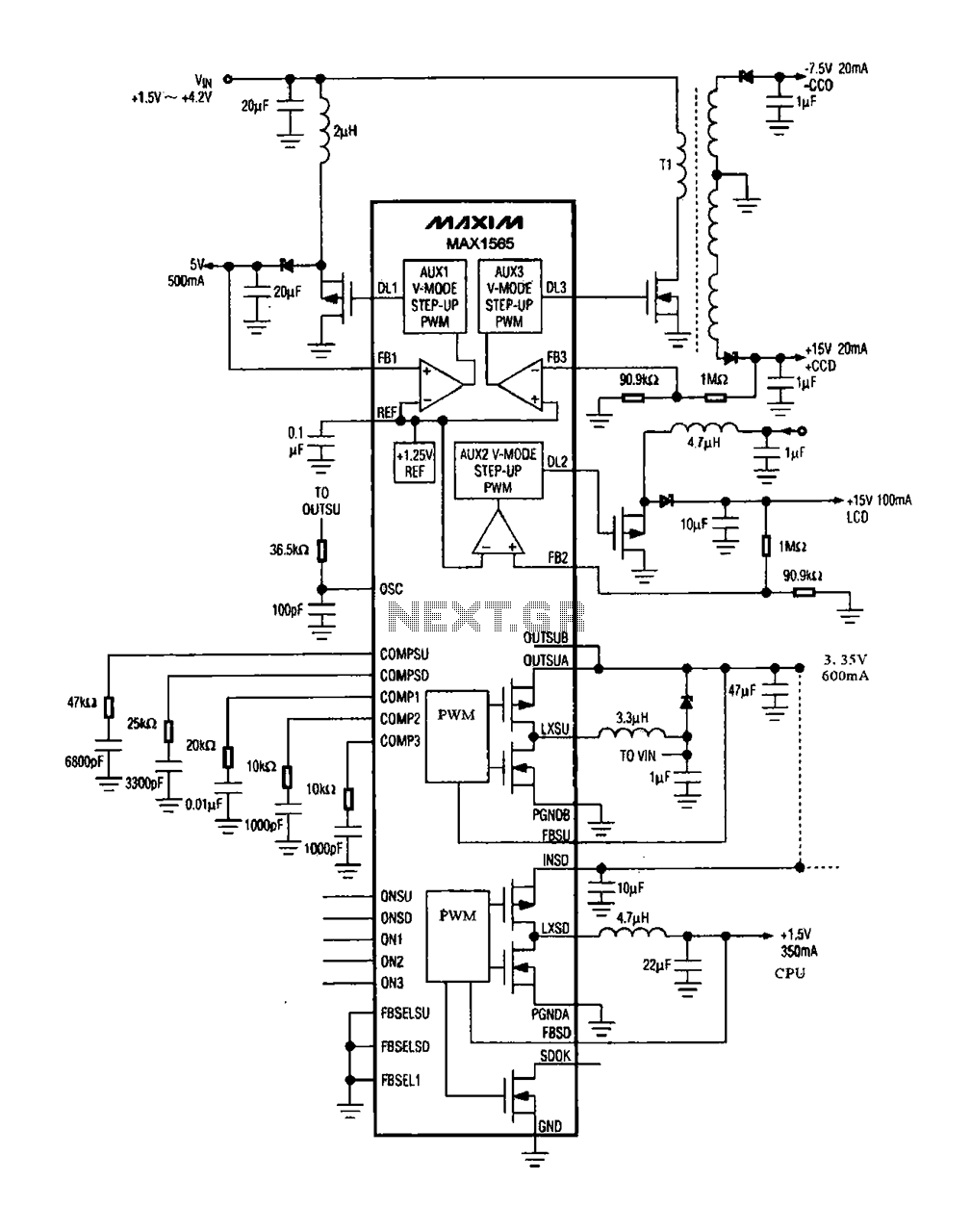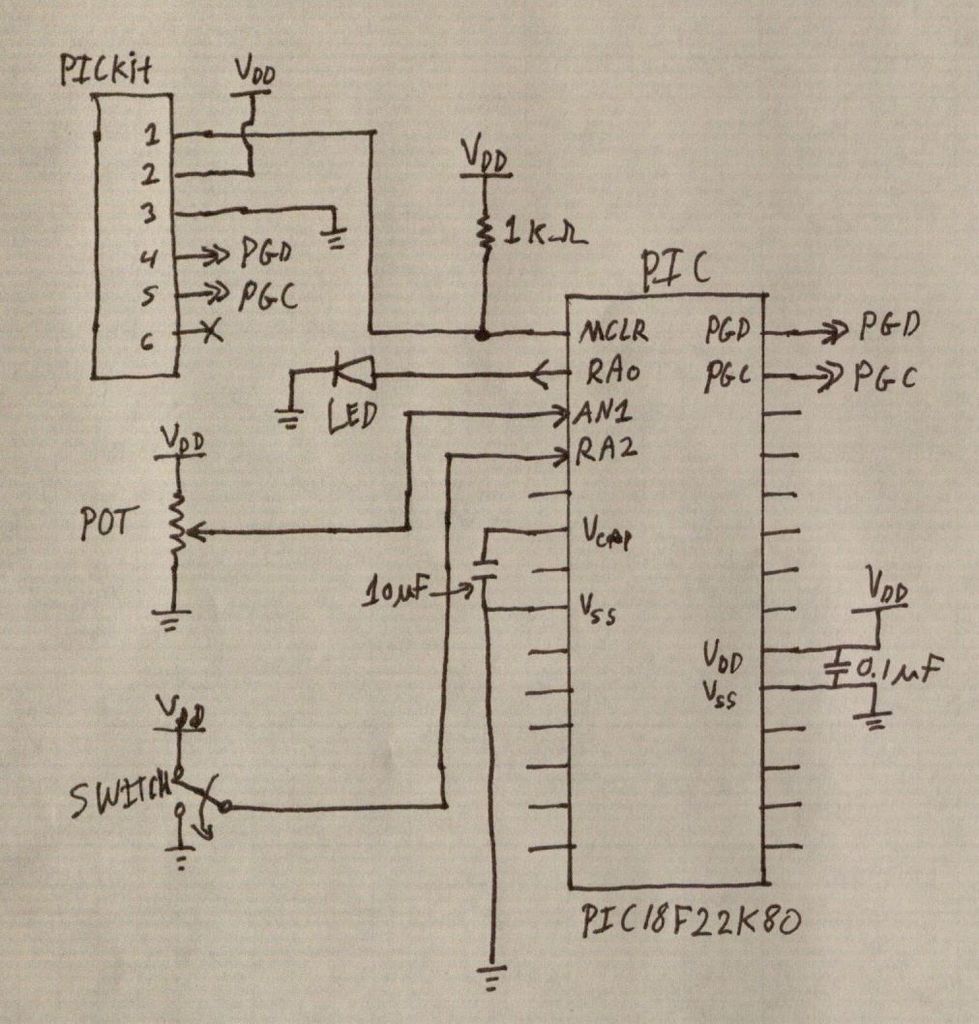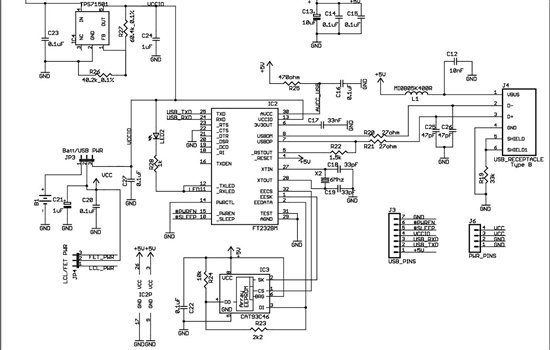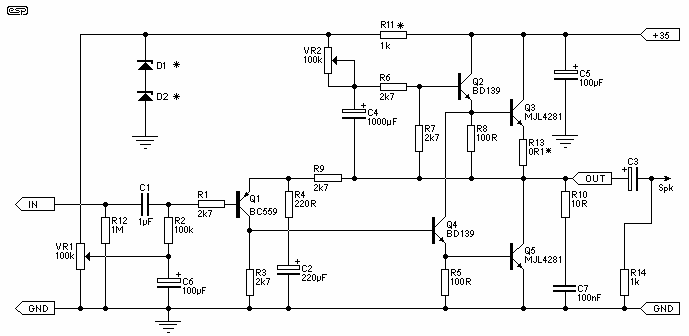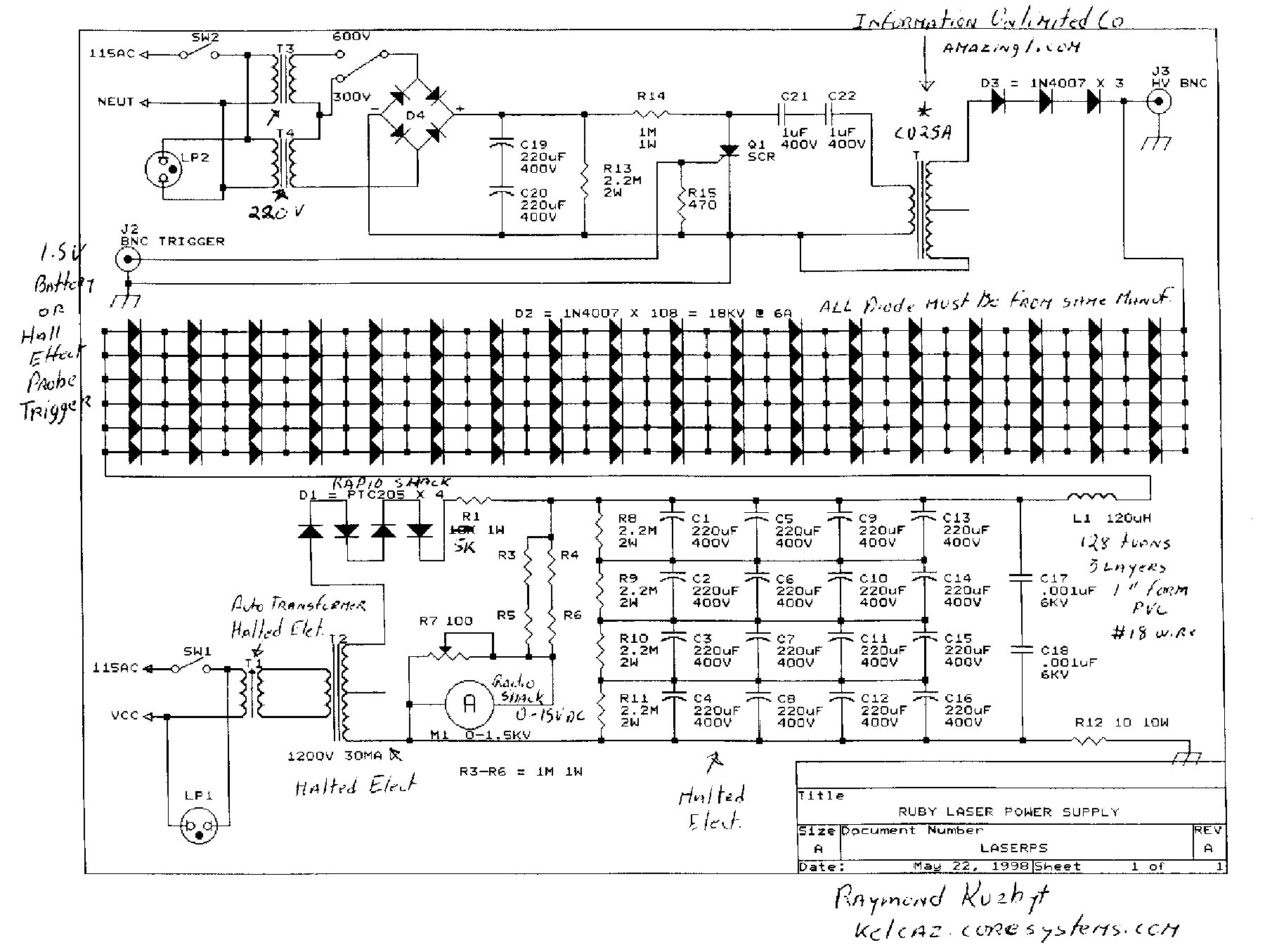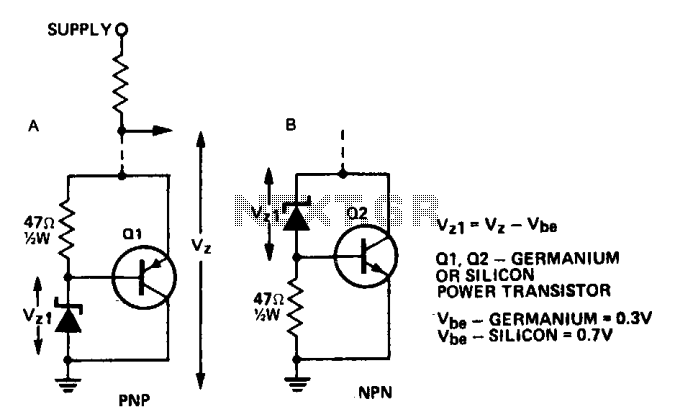
Micro Power Transmitting Station
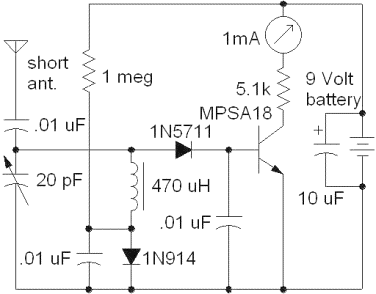
The purpose of this report is to provide background and findings of our senior project. We will discuss four steps that we used to complete our final project. The four steps of our project were research and development, design, construction, and test and acceptance. Building an AM transmitter allowed our group to apply our circuit design, fabrication skills, logical troubleshooting practices, and to prove the theory of operation. It is our intent to show the step-by-step process of how to build and operate a micro power AM transmitter station. When you have read our report, our findings will show that this project was more than assembling parts onto a circuit board. We will explain how, what, why, and when as directed by the instructor and provide reasoning and understanding to our approach. Anyone who reads this report will gain knowledge of how to design and implement a legally compliant micro power AM transmitter station. We chose a micro power transmitter station because it allowed us to utilize all the skills that we acquired while attending Devry University. We had many labs throughout our studies exploring the principles and theories behind digital and analog devices. We aimed to construct a project that incorporated several key elements of our electronics program. For this project, we would implement a component-level construction that we would improve through testing and acceptance to meet industry standards following guidelines mandated by the FCC. With an improved design and some patience, we would be able to produce a very useful device that could be set up to broadcast any message of the operator’s choice or music to a small receiving area. The exact requirements classify our project as a micro power transmitter station. Our team was formed due to our mutual experiences in other labs throughout our degree. The first meeting was used to decide on a project that we would mutually enjoy while challenging our new skills. After hours of searching the Internet, we came up with several different proposals. The design that we all agreed on was an AM transmitter with an additional useful tool to be used in conjunction called a strength meter. With valuable design ideas obtained, we began contacting different manufacturers of the parts we would need to complete the project. Our first decision was to find a usable frequency for our broadcast. We chose a carrier frequency of 1.64 Megahertz because it was widely available and not close to any major broadcasting stations. We contacted three different manufacturers of crystal oscillators but were discouraged by either the prices or the lengthy manufacturing and shipping times. After several trips to a local electronics supply store, Supertronics, we decided on a lower frequency of 960 kilohertz. Although a major broadcasting station, KJR 950, is nearby, we are shielded from outside interferences by the school. With our project decisions and tasks planned for each team member, we proceeded to design the project. By week two of the semester, we began looking for available programs to simulate our project on the computer. We felt it was imperative to use Multisim or a comparable program initially. After several attempts, we found that our transmitter, with its specific operation, did not simulate well on the computer. We decided to take inventory of the parts already available in our school toolbox and discovered that we would need to purchase most of the components. The team decided to place the circuit on a protoboard to get a rough idea of its operation. Several key components, such as high output transistors and the pot core, were special ordered online. While we awaited delivery, we continued to refine our design and prepare for the construction phase.
The AM transmitter project involves several critical components and stages that contribute to its overall functionality. The circuit design typically includes an oscillator circuit, modulator, amplifier, and antenna. The oscillator generates the carrier wave at the desired frequency, which is subsequently modulated with the audio signal to be transmitted. The modulator can be implemented using various methods, such as amplitude modulation (AM), where the amplitude of the carrier wave is varied in accordance with the audio input.
The choice of the carrier frequency is crucial for ensuring minimal interference with existing broadcasting stations. In this case, the decision to operate at 960 kHz was made after careful consideration of the surrounding radio frequency environment. The design must also comply with FCC regulations to ensure that the transmitter operates within legal limits for micro power stations, which typically have restrictions on power output and transmission range.
Construction of the transmitter involves assembling the components on a protoboard, allowing for adjustments and testing. This phase includes soldering connections, ensuring that all components are correctly oriented and connected. Testing the circuit involves using an oscilloscope to verify the waveform and a strength meter to measure the output signal strength, ensuring that it meets the required specifications.
Once the transmitter is operational, further testing is necessary to assess its range and audio quality. This may involve broadcasting a signal and measuring the reception quality at various distances. Any necessary adjustments can be made to improve performance, ensuring that the device operates effectively within the defined parameters.
Overall, the project encapsulates the practical application of theoretical knowledge gained throughout the electronics program, emphasizing the importance of hands-on experience in understanding circuit design and implementation.The purpose of this report is to provide background and findings or our senior project. We will discuss four steps that we used to complete our final project. The four steps of our project were research and development, design, construction, and test & acceptance. Building an AM transmitter allowed our group to apply our circuit design, fabricatio n skills, logical troubleshooting practices, and to prove theory of operation. It is our intent to show the step by step process of how to build and operate a micro power AM transmitter station. When you have read our report, our findings will show that this project was more than throwing parts on to a circuit board.
We will show how, what, why, and when as directed by the instructor and give reason and understanding to our approach. Anyone that reads this report will gain the knowledge of how to design and implement a totally legal micro power AM transmitter station.
We decided on a micro power transmitter station because it allowed us to utilize all the skills that we have acquired attending Devry University. We had many labs throughout our studies exploring the principles and theories behind digital and analog devices.
We wanted to construct a project that incorporated several key elements of our electronics program. For this project we would implement a component level construction that we would improve through test and acceptance to an industry standard following guidelines mandated by the FCC. With an improved design and a little patience, we would able to produce a very useful device that could be set up to broadcast any message of the operator ’s choice or music to a small receiving area.
The exact requirements to classify our project as a micro power transmitter station. Our team was formed because of our mutual experiences in other labs throughout our degree. The first meeting was used to decide on a project that we would mutually enjoy but yet challenge our new skills. After hours of combing the Internet, we came up with several different proposals. The design that we all agreed on was and AM transmitter with an additional useful tool to be used in conjunction called a strength meter.
With very helpful design ideas obtained from, we began calling different manufacturers of the parts we would need to complete the project. Our first decision was finding a usable frequency that we would be transmitting our broadcast on. Our decision was on a carrier frequency of 1. 64 Megahertz, because it was very available and not close to any major broadcasting stations. We called 3 different manufactures of crystal oscillators, but were discouraged by either the prices or the length of time we would have to wait for manufacturing and shipping.
After several trips to a local electronics supply store, Supertronics, we decided on a lower frequency of 960 kilohertz. Although there is a major broadcasting station, KJR 950, nearby we are isolated by the shielding of the school from outside interferences.
With our project decisions and task planned for each member of the team, we were on our way to designing the project. We had our design in hand after the research and development phase of the project. In week 2 of the semester we began looking for available programs to use to put our project on the computer.
We felt it was imperative to simulate our idea using multisim or a comparable program at first. After several attempts we found that our transmitter, with its very particular operation, did not simulate very well on the computer. We decided to take an inventory of the parts that we already had in our school toolbox and found that we would need to buy the majority of the parts.
The team decided to put the circuit on a protoboard where we could get a rough idea of how well it would operate. Several key components such as high output transistors and the pot core were special ordered on the internet.
While we waited for the delivery 🔗 External reference
The AM transmitter project involves several critical components and stages that contribute to its overall functionality. The circuit design typically includes an oscillator circuit, modulator, amplifier, and antenna. The oscillator generates the carrier wave at the desired frequency, which is subsequently modulated with the audio signal to be transmitted. The modulator can be implemented using various methods, such as amplitude modulation (AM), where the amplitude of the carrier wave is varied in accordance with the audio input.
The choice of the carrier frequency is crucial for ensuring minimal interference with existing broadcasting stations. In this case, the decision to operate at 960 kHz was made after careful consideration of the surrounding radio frequency environment. The design must also comply with FCC regulations to ensure that the transmitter operates within legal limits for micro power stations, which typically have restrictions on power output and transmission range.
Construction of the transmitter involves assembling the components on a protoboard, allowing for adjustments and testing. This phase includes soldering connections, ensuring that all components are correctly oriented and connected. Testing the circuit involves using an oscilloscope to verify the waveform and a strength meter to measure the output signal strength, ensuring that it meets the required specifications.
Once the transmitter is operational, further testing is necessary to assess its range and audio quality. This may involve broadcasting a signal and measuring the reception quality at various distances. Any necessary adjustments can be made to improve performance, ensuring that the device operates effectively within the defined parameters.
Overall, the project encapsulates the practical application of theoretical knowledge gained throughout the electronics program, emphasizing the importance of hands-on experience in understanding circuit design and implementation.The purpose of this report is to provide background and findings or our senior project. We will discuss four steps that we used to complete our final project. The four steps of our project were research and development, design, construction, and test & acceptance. Building an AM transmitter allowed our group to apply our circuit design, fabricatio n skills, logical troubleshooting practices, and to prove theory of operation. It is our intent to show the step by step process of how to build and operate a micro power AM transmitter station. When you have read our report, our findings will show that this project was more than throwing parts on to a circuit board.
We will show how, what, why, and when as directed by the instructor and give reason and understanding to our approach. Anyone that reads this report will gain the knowledge of how to design and implement a totally legal micro power AM transmitter station.
We decided on a micro power transmitter station because it allowed us to utilize all the skills that we have acquired attending Devry University. We had many labs throughout our studies exploring the principles and theories behind digital and analog devices.
We wanted to construct a project that incorporated several key elements of our electronics program. For this project we would implement a component level construction that we would improve through test and acceptance to an industry standard following guidelines mandated by the FCC. With an improved design and a little patience, we would able to produce a very useful device that could be set up to broadcast any message of the operator ’s choice or music to a small receiving area.
The exact requirements to classify our project as a micro power transmitter station. Our team was formed because of our mutual experiences in other labs throughout our degree. The first meeting was used to decide on a project that we would mutually enjoy but yet challenge our new skills. After hours of combing the Internet, we came up with several different proposals. The design that we all agreed on was and AM transmitter with an additional useful tool to be used in conjunction called a strength meter.
With very helpful design ideas obtained from, we began calling different manufacturers of the parts we would need to complete the project. Our first decision was finding a usable frequency that we would be transmitting our broadcast on. Our decision was on a carrier frequency of 1. 64 Megahertz, because it was very available and not close to any major broadcasting stations. We called 3 different manufactures of crystal oscillators, but were discouraged by either the prices or the length of time we would have to wait for manufacturing and shipping.
After several trips to a local electronics supply store, Supertronics, we decided on a lower frequency of 960 kilohertz. Although there is a major broadcasting station, KJR 950, nearby we are isolated by the shielding of the school from outside interferences.
With our project decisions and task planned for each member of the team, we were on our way to designing the project. We had our design in hand after the research and development phase of the project. In week 2 of the semester we began looking for available programs to use to put our project on the computer.
We felt it was imperative to simulate our idea using multisim or a comparable program at first. After several attempts we found that our transmitter, with its very particular operation, did not simulate very well on the computer. We decided to take an inventory of the parts that we already had in our school toolbox and found that we would need to buy the majority of the parts.
The team decided to put the circuit on a protoboard where we could get a rough idea of how well it would operate. Several key components such as high output transistors and the pot core were special ordered on the internet.
While we waited for the delivery 🔗 External reference
